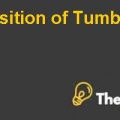
Background
The Astor Park Hotel was originally constructed as a dormitory for the University of the Northwest (UNW) in 1969 but later on it has been converted into a retirement home. The conversion was financed by a large California based bank, Wells Fargo. The property instantly went into default and Wells Fargo took over the asset and brought it in Hyatt to remodel and operate the property as a hotel. Later on, the bank sold the hotel to Andrew Pimentel, who was a Pacifico based real estate developer for $9 million and he changed the name of the property to the Astor Park Hotel.
The hotels enjoyed tremendous success in the early 1980’s that prompted Pimentel to take a 25-year, $40 million non-recourse loan with interest accruing at 10.69% from Equitable in 1987. Then the owners used $6 million from the loan to pay off their original acquisition financing, $10 million of the Equitable debt was used for improvements to the property and the remaining $24 million from Equitable was distributed to Pimentel and his partners. Later on, the owners added more debt in the form of a $5 million, 20-year second trust deed with a constant of 11.75% provided by Equitable. The proceeds from the new equitable loan were used for hotel improvements.
In the early 1990’s, the hotel market changed dramatically due to the increased competition and a there was a precipitous decline in the health of the Pacifico economic environment and as a response to this decline, owners and the lenders restructured the property’s loans that allowed a future debt service deferral of $6 million, which was to be used for renovation.
The funds were used for new carpeting, wallpaper, lighting, fixtures and entire bathrooms. Further, the lobby received new wallpaper, marble floors and furniture. Despite an excellent location, recent renovations and first-class amenities, the Astor Park continued to perform poorly that led the hotels to defer the interest from $6 million in 1993 to over $18 million that left the property encumbered with a total of $63 million in debt. The debt burden proved to be too much for the property, which led them to file bankruptcy.
Introduction
The report presents a case about Starwood Hotels and Resorts, one of the largest hotel operators around the world, who are considering to acquire Astor Park Hotels. The potential organization faced difficulty in generating revenues due to increased competition and due to the worst economic condition of the country, which increased the debt burden of the property that led them to file bankruptcy.
The report comprises a part of the Starwood’s intention where they believed that the Astor Park was undervalued and had not properly maximized management efficiencies, so they considered that they could do well with potential acquisition by adopting a sound repositioning strategy. Further, the report also comprised of outstanding issues regarding financing, deal structure and repositioning.
Problem Statement
The management was concerned about the valuation and forecasted returns from the potential acquisition. Further, the management was also concerned about the repositioning strategy where they were anxious about whether the proposed strategy would be attractive to Starwood and their related equity partners.
Difficulty in current operations
Astor Park was suffering difficulties in managing its operations due to the market positioning and management inefficiencies. In an evaluation, it has been determined that Average Daily Rates (ADR) and occupancy levels are the key measures of the hotel’s general strength. Although, occupancy levels reflect industry’s wide patterns but they were also considered as a significant measure of a hotel’s position within its local competitive market. Astor Park was generating an ADR of only $175, excluding owner’s related rooms that represent only 65% of capacity as compared to its peers, which represent occupancy of 70%.
Further, the company reported poor performance because of the undisciplined management that allowed the property to slip from the top tier of the Pacific Northwest luxury market. It was due to the inconsistent and deteriorating guest room mix on the lower floors; management turnover and over staffing with poorly trained employees that contributed significantly to the poor performance.
Starwood knows that the turnaround would not be easy because residential, retail and office projects, were perhaps the riskiest and most complex form of real estate management, development and ownership. It would also require high capital building costs, complicated design and construction that increased the operating risks of the company. Further, occupancy was another factor that was significantly influenced by changes in the economy.
Reason to invest
Starwood believes that there are number of areas where dramatic improvements can be achieved in the operations of Astor Park. The major revenue of the hotels is generated from rooms, so the company can use complimentary or discounted rooms so as to attract old and potential customers. Further, second largest segment of the hotel can be targeted and Starwood can exercise its strong focus on food, beverage and weekend brunch so as to enjoy incredible success................
This is just a sample partial case solution. Please place the order on the website to order your own originally done case solution.
Starwood Hotels, the largest REIT in the world, is interested in acquiring underperforming hotel in the Pacific Northwest. Steve Goldman, vice president of acquisitions and development of Starwood, wondering how to pay for the property and how to change it. "Hide
by William J. Poorvu, Arthur I Segel, Matthew C. Lieb Source: Harvard Business School 17 pages. Publication Date: February 9, 2000. Prod. #: 800194-PDF-ENG











